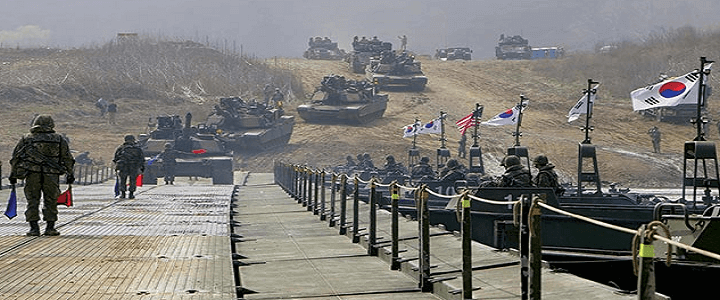So the New York Times thought it had a slam dunk on its hands. North Korea, according to a report from the Center for Strategic and International Studies, a Washington think tank, was secretly continuing to improve 16 ballistic missile launch sites. For all its sweet talking around peace and denuclearization on the Korean Peninsula, the article implied North Korea was continuing to deceive the U.S.
Critics of the administration’s efforts to reach a deal with the Democratic People’s Republic pounced, convinced that CSIS and the Times had the goods, proof that Kim Jong-un has no intention of stopping his nuclear program anytime soon. After all, even Secretary of State Mike Pompeo admitted in Senate testimony back in July that the North was still producing the fissile material necessary to build nuclear warheads. The Hermit Kingdom continues to dodge making concrete promises. And at the same time the missile site story became public, it backed out of a planned ministerial-level meeting at the last minute last week.
Noted “hardliner” Kim Yong-chol, the DPRK’s most senior military intelligence officer and the close confidant of Kim’s, is leading the talks for the North. He was supposed to travel to New York this week for meetings with Pompeo, but as the BBC reported, “the North Koreans didn’t get on the plane as planned.”
These developments certainly don’t help the narrative. Despite that, the Times’ interpretation of the CSIS report is not universally shared.
The article declares that “The satellite images suggest that the North has been engaged in a great deception: It has offered to dismantle a major launching site — a step it began, then halted — while continuing to make improvements at more than a dozen others that would bolster launches of conventional and nuclear warheads.”
The report’s authors are noted experts on the North Korean nuclear program. Victor Cha is a prominent Korean scholar who was an early favorite to lead the U.S. negotiations with North Korea. Joseph Bermudez is a senior fellow for imagery analysis at CSIS who used to write for the site 38North.org when it was affiliated with Johns Hopkins University (it is now part of the Hudson Institute, another Washington think tank). Cha’s and Bermudez’s analysis is authoritative, but the way the Times reporters portrayed it is not.
What we Know About North Korea
Another 38North scholar, Leon Sigal, helpfully points out the differences between the report says and what the New York Times says it says. “Substituting tendentious hyperbole for sound reporting may convince editors to feature a story on page one,” Sigal wrote, “but it is a disservice to readers.”
Far from being deceptive, the U.S. and south Korean intelligence communities have known about these missile sites all along, and they’ve said so. The Times story acts as though without the eagle eyes at CSIS, we’d have been blind all along. This, of course, ignores the fact that government satellite imagery from our constellation of “Key Hole” satellites is far better than anything available commercially. In fact, commercial satellite imagery companies like DigitalGlobe are legally prohibited from selling any photo with a resolution greater than 30 centimeters-per-pixel.
While U.S. spy satellite resolution is highly classified, some analysts have suggested it could be as high as seven centimeters-per-pixel. Think about that. Find your house on Google Earth or Apple Maps, zoom in as far as you can, and admire the clarity. Recognize your car in the driveway? Then realize that our spy satellites can see more than three times as clearly.
Do you really think that North Korea has any missile site that we don’t know about?
Mocking the administration’s attitude towards North Korea has become a Beltway parlor game. Public statements are sometimes overly enthusiastic, but one should never mistake public optimism for naïveté. The U.S. government’s eyes are wide open and watching everything the North does.
We’re a long way from the stated goal of “complete, verifiable, and irreversible denuclearization.” But talking is better than not talking. Progress is slow, and the nature of diplomacy is anathema to our culture of instant gratification. The Times can and should do better than fear-mongering.




